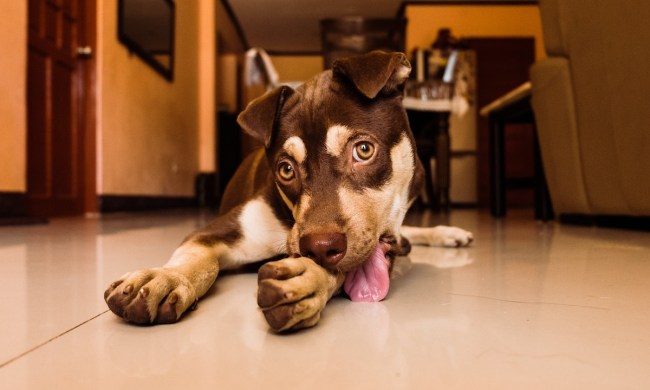
Though you want to be more mindful about the foods your dog eats as they get older, it does not mean you have to get into expensive meal prepping plans that require a lot of time and energy. Instead, you can find different varieties of senior dog foods that will benefit your dog. If you have more particular needs that you need help with, your veterinarian will give you some great tips that are more personalized to your dog.
Senior dogs differ from younger dogs in many ways that cause them to need a different diet. Due to their age, they tend to be less active. They are also at a higher risk for diseases like kidney disease, heart disease, or high blood pressure. One of the more surprising facts about senior dogs is that they are more likely to be prone to dehydration. All of these shifts in a senior dog’s body should be accounted for when buying their food.
Purina One Senior Dry Dog Food
Best Pellets Variety

Purina One Senior Dry Dog Food is designed to be a protein-rich and nutritious meal for all types of senior dogs. The meaty morsels are interspersed with crunchy kibble bits, so your dog will get an easy-to-eat texture with a familiar taste that they love. The nutrition in these tasty morsels will promote your dog’s immune system, digestion, and muscles.
Blue Buffalo Senior Dry Dog Food
Best With Lifesource Bits

When you want a meaty and healthy bite for your dog, the Blue Buffalo Senior Dry Dog Food is perfect for your bowl. These also contain LifeSource Bits, which are a mix of antioxidants, vitamins, and minerals that are selected by veterinarians and nutritionists to support a senior dog’s bodily demands. It helps boost your dog’s immune systems and give them a healthy oxidative balance.
Iams Senior Dry Dog Food
Best Value

Dog owners can relax from the stress of buying the right kind of senior dog food when they get a pack of Iams Senior Dry Dog Food. This affordable bag of dog food proactively improves your senior dog’s health. It is full of antioxidants, key nutrients, and prebiotics that promote joint health and digestion. The first ingredient of this dog food is chicken, so you’ll know that your dog is getting enough protein for their development.
As our pets grow older, we want to make sure we are taking care of them in the best ways they can. These formulated senior dog foods will promote their health and keep them happy while they are still running around in your life.


